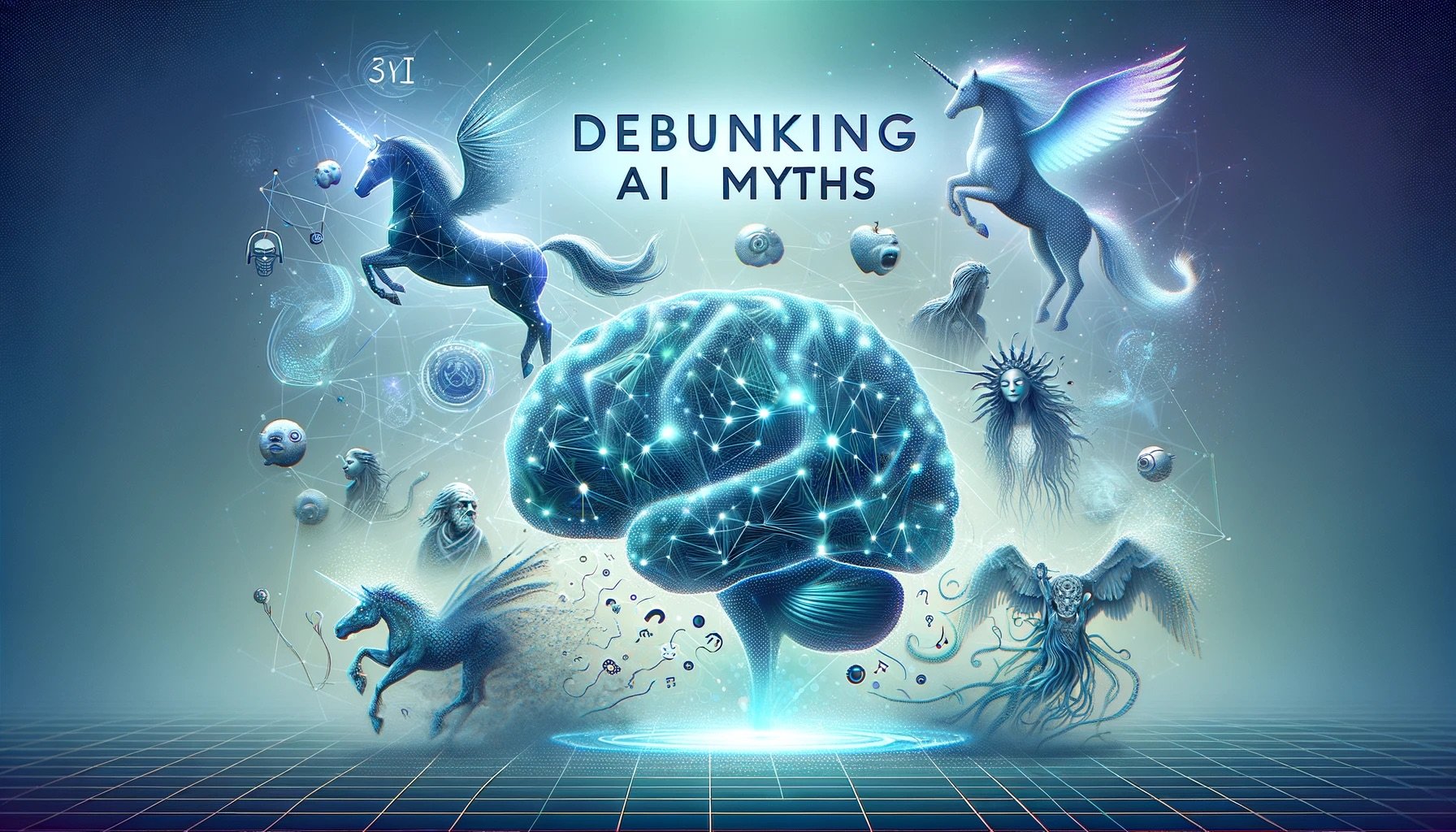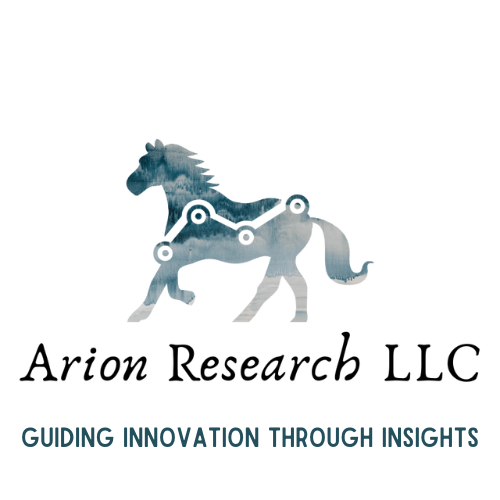
How to Align Your Organization's Goals with a Digital-First Strategy
A digital-first business strategy isn't just about having a website or social media presence. It's a complete overhaul in how a company thinks and operates. In this approach, digital technology is the cornerstone of everything the business does. From customer interactions and marketing to internal operations and product development, digital tools and processes take center stage. This doesn't mean abandoning traditional methods entirely, but rather viewing them through a digital lens and prioritizing digital channels whenever possible.

AI and Creative Design
Forget the fear-mongering – AI isn't here to replace designers. Instead, imagine it as the ultimate creative sidekick. It can handle tedious tasks, generate fresh ideas, and unlock exciting possibilities. In a recent episode of Disambiguation I interviewed two executives from DXM, an AI design tool for brands. It was a great conversation, you should check out the whole episode, but one important takeaway is the concept that AI for creatives is human augmentation, not human replacement. Let’s look at how to harness the power of AI, opening up a world of new design opportunities.

Making Intelligent Decisions in Information Intensive Business Activities
Data driven decision making has been a business goal for many years, growing out of the big data and analytics revolution. With broader interest in artificial intelligence (AI) over the past year or so, new ways to approach decision processes are gaining momentum. For routine business decisions, generative AI and integrated data models are rapidly changing the approach away from basic business intelligence (BI) and analytics solutions and the subsequent dashboards and queries derived from them, to a natural conversation with the data to uncover the necessary answers to support the decision. This move to a natural question and answer process over pre-built dashboards and queries, accelerates the decision process and enables users to find specific answers much more simply and independently instead of relying on either predefined and thus limited views of the data; or IT, data scientists and data analysts for custom views. This is a big step forward for day-to-day decision making, and can add value in more complex business activities, but is, however, not a broad enough solution to solve the more complex decision scenarios.

Air Canada and the Chatbot, Learning from Your CX Mistakes
I can’t get this recent Air Canada customer experience “incident” out of my head. We’ve written and talked extensively about how you can use AI and generative AI to dramatically improve your customer experience (CX). Apparently we also need to talk about how the policies you build around the use of generative AI, particularly customer service chatbots, can deliver the opposite of that “good” CX you think you’re building.

Transforming Data Analysis: Using AI for Better Business Decisions
Traditional business intelligence (BI) tools often struggle with the sheer volume, complexity, and speed at which data is generated today. Enter AI. Artificial intelligence offers a revolutionary approach to data analytics, empowering businesses to uncover hidden patterns, predict future outcomes, and automate key analytical tasks. AI-infused platforms utilize machine learning, natural language processing, and advanced algorithms to deliver insight that's far deeper and more actionable than what traditional BI tools can provide on their own. This transformation is allowing companies to make faster, data-driven decisions that drive improved performance and agility.

Scaling Up with AI: Strategies for Small and Medium Businesses (SMBs)
In today's rapidly evolving business landscape, Artificial Intelligence (AI) is no longer a luxury reserved for large businesses. Small and Medium Businesses (SMBs) are increasingly discovering how AI can act as a powerful equalizer, allowing them to scale their operations with unprecedented speed and gain a competitive edge against larger enterprises. AI-powered solutions streamline essential processes, empower data-driven decision-making, and deliver hyper-personalized customer experiences. With the right strategies, SMBs can harness the transformative power of AI to level the playing field and unlock growth opportunities that were once seemingly out of reach.

Debunking AI Myths: Address common misconceptions and myths about AI and generative AI
Business leaders often have misconceptions and myths about AI and generative AI, shaped by media representation, industry hype, and rapid technological advancements. Here are some of the most common ones:

Choosing the “Right” Language Model
At their core, language models are statistical tools designed to understand and generate human language. They work by assigning probabilities to sequences of words or characters. To put it simply, they excel at predicting what word or phrase is likely to come next in a given sentence or piece of text.

AI-Driven Decision Making: Transforming Business Strategies with Data
Business decision-making processes are undergoing a transformative change, thanks to the use of Artificial Intelligence (AI) and Data Analytics. These technologies are not just buzzwords but are real, practical tools that are reshaping how businesses operate, innovate, and grow. Here are a few ways that AI and Data Analytics are revolutionizing various aspects of business decision-making.

Consolidation in PRM: Relevize Acquires PartnerPortal.io
Relevize, a company known for automating demand generation processes for companies like Salesforce, Atlassian, and Shopify, has announced the acquisition of PartnerPortal.io, a self-serve PRM company. This acquisition is backed by Insight Partners and is part of Relevize's strategy to consolidate its position in the partner-tech market and enhance its offerings. In 2022, Relevize secured $6 million in funding from Insight Partners, with additional contributions from other investors. The acquisition of PartnerPortal.io is seen as a commitment to innovation and growth in the competitive partner-tech market.

Enhancing The Internet of Things with Artificial Intelligence
Businesses can leverage the combination of AI and IoT to drive innovation, efficiency, and better decision-making across various operations. This marriage is referred to as Artificial Intelligence of Things (AIoT). The integration is poised to transform industries by enabling smarter, more responsive, and more efficient systems. By combining these two, AIoT creates smarter, more automated systems that can analyze data in real-time, make intelligent decisions, and even take actions on their own. This opens up a wide range of use cases for businesses.

AI in Manufacturing: Product Design
Artificial Intelligence (AI) has become an integral part of the new product design process for manufacturers. Its role is multifaceted and evolving, offering various benefits that streamline and enhance the design process. In manufacturing product design, different types of Artificial Intelligence (AI) are employed to enhance various aspects of the design process, improve efficiency, and create innovative products. The primary AI types utilized include machine learning, deep learning, natural language processing (NLP), and computer vision, among others.

AI in Manufacturing: Production Planning
Production planning in manufacturing is a critical process that involves planning and organizing the manufacturing activities of a company. It is designed to ensure that production processes are carried out efficiently and effectively, with the goal of meeting customer demands and maximizing profitability. Key aspects of production planning include:
Demand Forecasting: Estimating the future demand for products, which is crucial for deciding the production quantity.
Resource Allocation: Determining the resources (like raw materials, workforce, machinery, etc.) required for production and ensuring their availability.
Process Planning: Deciding on the sequence of operations, the path that each product or part will follow through the production process.
Capacity Planning: Ensuring that the manufacturing facility has enough capacity (in terms of labor, equipment, and space) to meet the production goals.
Inventory Management: Managing the inventory of raw materials, work-in-progress, and finished goods to balance the costs with production and customer demand.
Scheduling: Developing a detailed timetable for production, specifying when each task should start and end.
Quality Control: Implementing systems to ensure that products meet quality standards and customer expectations.
Cost Control: Monitoring and controlling the costs associated with the production process.
Supply Chain Coordination: Coordinating with suppliers and logistics partners to ensure the timely delivery of raw materials and the shipment of finished products.
Continuous Improvement: Regularly analyzing the production process and implementing improvements to increase efficiency and effectiveness.

AI Embedding Models
Embedding models are a type of machine learning model used primarily in natural language processing (NLP) but also in other domains like computer vision. They work by converting high-dimensional data (like text or images) into lower-dimensional, dense vectors in a continuous vector space. These vectors are known as embeddings. The purpose of embeddings is to capture the relationships and semantic meanings of the data in a way that's easier for machines to process and analyze.

Using Generative AI for Brainstorming
Brainstorming is an essential business activity, but sometimes, sparks of genius can be hard to come by. Generative AI can be a powerful tool to take your business brainstorming sessions to the next level. Here's an overview of how you can use it for brainstorming:
Idea generation: Seed the AI with relevant information about your challenge (target audience, industry trends, existing products) and let it generate a diverse range of potential solutions. This can be text-based (product features, marketing campaigns) or even visual (prototype designs, brand concepts).
Breaking mental blocks: Use the AI to explore unconventional directions by providing unexpected combinations of concepts or generating ideas based on completely different fields. This can push you beyond your usual thought patterns and uncover hidden possibilities.
Facilitating collaboration: Let the AI act as a virtual idea catalyst, bouncing off suggestions from team members and building upon them to create richer, more developed concepts. This can encourage team participation and break down traditional hierarchies in brainstorming sessions.
Testing and evaluation: Use the AI to generate diverse user personas and scenarios to test your ideas. This can provide valuable feedback early on in the development process, helping you identify potential flaws and iterate faster.

Understanding Community-led Growth
Product-led growth (PLG) has dominated the discussion around go-to-market (GTM) strategies for several years. PLG is a business strategy where the product itself drives customer acquisition, expansion, conversion, and retention. This approach differs from traditional sales or marketing-led strategies in that the product is at the forefront of the growth efforts, with the aim to create a product that sells itself. A newer strategy though, community-led growth (CLG) is garnering a lot of attention over the past few years. CLG is a business strategy where a company focuses on building and nurturing a community of users, customers, or enthusiasts around its product or service. This approach relies heavily on the community to drive awareness, adoption, and continuous improvement of the product. The strategies aren’t mutually exclusive though, something we’ll look at later in this post, but first some more detail on CLG.

Using Virtual Assistants to Improve Business Productivity
With the introduction of virtual assistants (VAs) like Microsoft’s Copilot, Salesforce’s Einstein Copilot and a number of other vendor offerings this past year, VAs are becoming much more common business tools. VAs are software programs designed to perform tasks or services for an individual or a business. They are increasingly used in various fields for their efficiency, cost-effectiveness, and ability to handle repetitive or complex tasks. While GPTs and LLMs enable VAs, the technology behind VAs includes several key components

Using Artificial Intelligence to Improve Customer Satisfaction
Before jumping into the use cases of AI that can impact customer satisfaction, let’s take a quick look at two key strategy areas related to customers. Customer Success (CS) and Customer Experience (CX) are two critical concepts for modern business, both centered around optimizing the customer's interaction with a company, but they differ in their specific focus and execution.

The Democratization of AI: A New Era of Accessibility and Integration
Artificial Intelligence (AI) is not new, it has been around for several decades in various forms, and even though its promise and potential was high, until recently its use has been relatively limited to process optimization, decision support, and enhancing customer experience. While those use cases are impactful, the number of users who either used the AI directly or used systems empowered with AI were limited. With the introduction and widespread access to generative AI tools like ChatGPT last year though, a rapidly growing number of people had the opportunity to use AI and realize / observe some of that potential benefit directly.

Using the LangChain Framework with Generative AI
LangChain is a framework designed for working with large language models (LLMs) like OpenAI's GPT-4. It's a set of tools and libraries that facilitate the development of applications built around LLMs. LangChain is designed to enable the chaining of LLMs with other tools and databases. It focuses on integrating various AI components, such as LLMs, databases, and search engines, to create more comprehensive and sophisticated AI systems. The idea is to leverage the strengths of different AI components to enhance the capabilities of language models in understanding and generating text.
